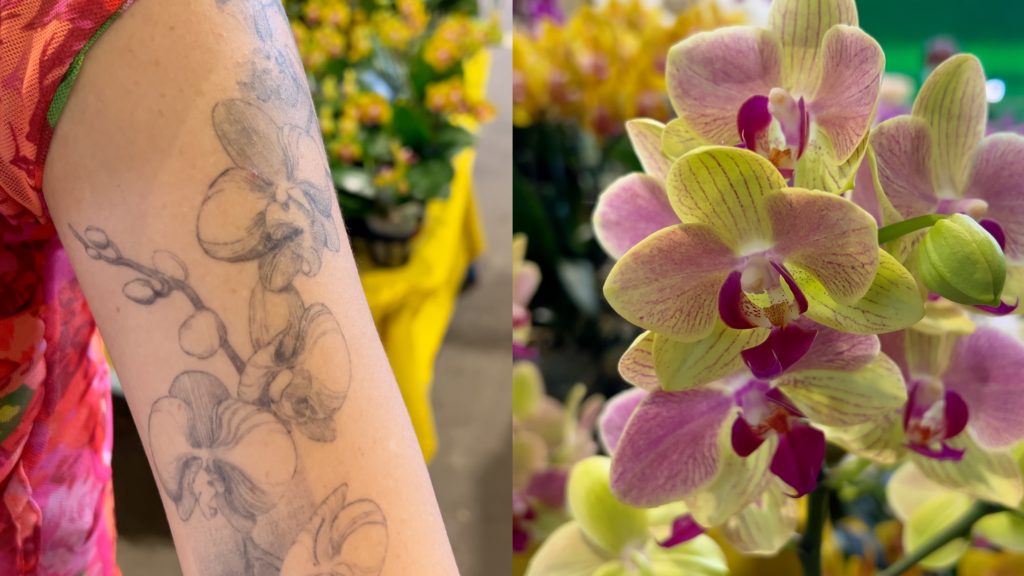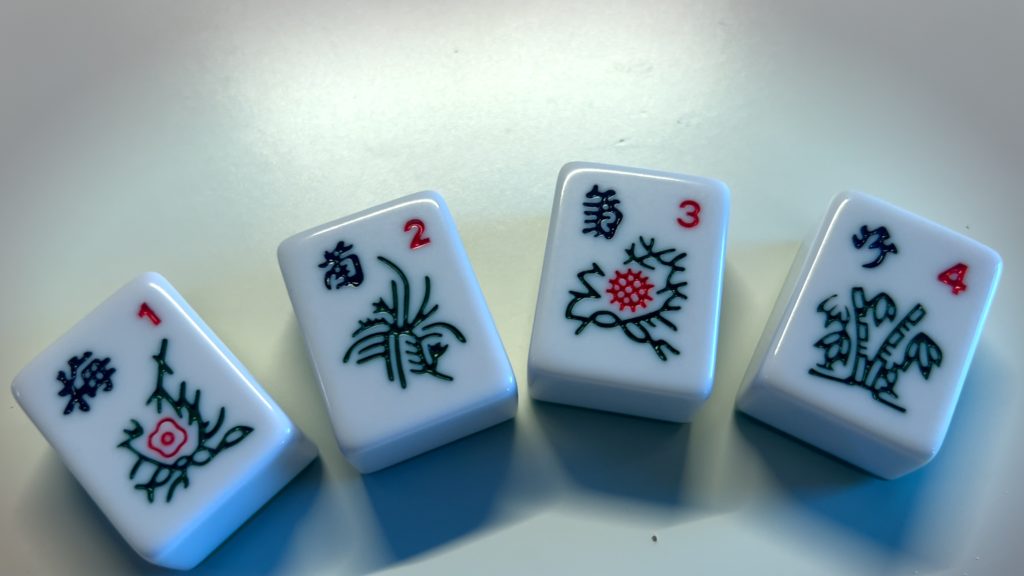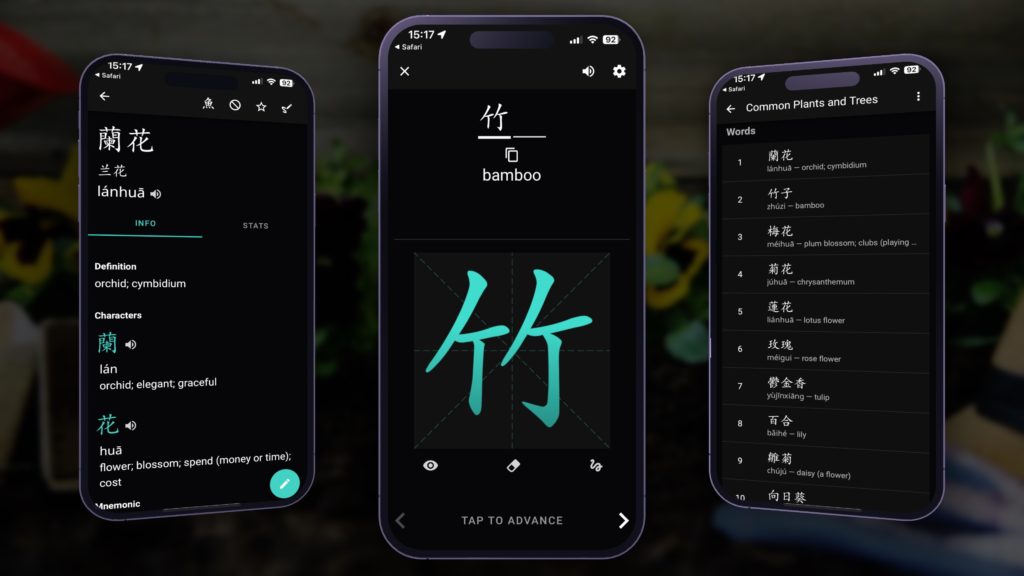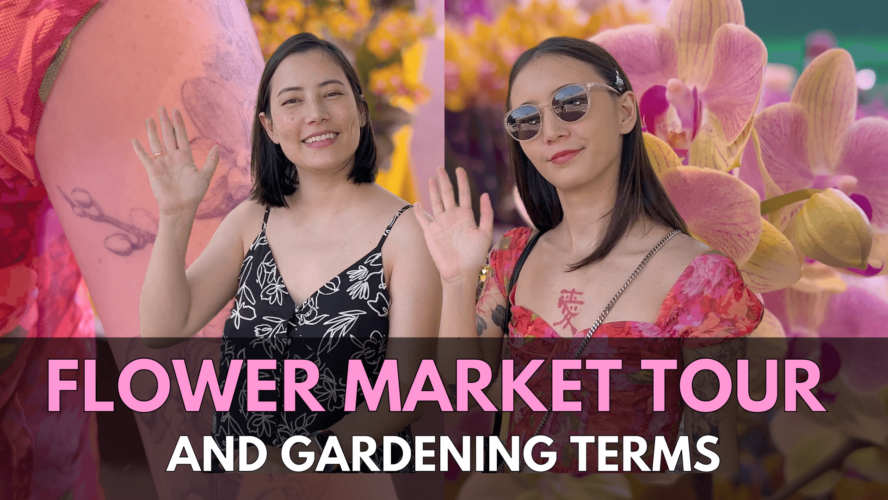Welcome back to our cultural journey around Taiwan with our tour of Taipei’s famous Jade and flower markets – 建國假日玉市 and 建國假日花市. After exploring the cultural significance and key phrases related to Jade in our last trip, today’s tour takes us across the road into the rhythmic hum and perfumed wonders of the bustling Jianguo flower market. Additionally, we’ll explore the deeply entrenched cultural meanings behind some of the most significant flowers in Chinese culture.
Jianguo Flower Market: A Hub for Gardeners and Urban Dwellers
The Jianguo flower market sits under the Jianguo overpass, like its jade counterpart. If you’re in Taipei, take the red line to Daan Park station, and leave at exit 6. The flower market offers generous space and high ceilings, welcoming its visitors with a rejuvenating mist of water vapor. The 建國假日花市 makes a popular and convenient spot for city dwellers looking to buy their household plants, flowers (买花/買花), gardening tools (园艺工具/園藝工具), and even fresh fruit and vegetables (蔬菜水果).
This market dominates as the go-to place to find large plants and trees, making it a hassle-free alternative to the out-of-town garden centers.
Iona’s Favorite Flower: The Orchid
As we continue our expedition, we stumble upon one of Iona’s beloved flowers, the Orchid – 兰花/蘭花. Symbolizing this bond, Iona adorns a tattoo of the flower on her arm, honoring her mother who held the same affection for this plant.

Interestingly, Orchids are one of the famed “four gentlemen of flowers” in Chinese literature, also known as 花中四君子. This group includes plums, orchids, bamboo, and chrysanthemums – 兰花, 竹子, 梅花, and 菊花. Widely featured in historical texts, paintings, and even the culturally significant tile game – mahjong, these flowers bear cultural significance in Chinese society.

Delve Deeper: The Four Gentlemen of Flowers and Their Meanings
The “four gentlemen of flowers” hold distinct yet complementary meanings, each representing a Confucian virtue and one of the four seasons.
- 兰花 (Lánhuā) – The Orchid: Orchid embodies elegance, refinement, and purity. It serves as the manifestation of the Confucian virtue of being morally upright and dignified.
- 竹子 (Zhúzi) – The Bamboo: Bamboo speaks volumes about strength, flexibility, and resilience. These traits bring to life the virtue of integrity, humility, and moral endurance, aligning with the Confucian ideal of noble character.
- 梅花 (Méihuā) – The Plum Blossom: Blooming in the harshest winters, plum blossoms radiate perseverance and resilience. Its beauty in adversity makes it symbolize strength and endurance.
- 菊花 (Júhuā) – The Chrysanthemum: Closely associated with autumn, the chrysanthemums’ graceful bloom in the colder months showcases the traits of inner strength and unwavering loyalty.
There is also a common Chinese saying, “Spring orchids, summer bamboo, autumn chrysanthemums, winter plums” 春蘭、夏竹、秋菊、冬梅 which beautifully alludes to how these plants represent the four seasons.

Concluding the Tour
We hope you enjoyed this enlightening, sensory-filled tour of Jianguo flower market, deep diving into Chinese cultural symbols. If Mandarin entices you and you’re keen to discover more about Chinese flora, download the Skritter app (iOS / Google Play) today and light your Mandarin learning journey.



